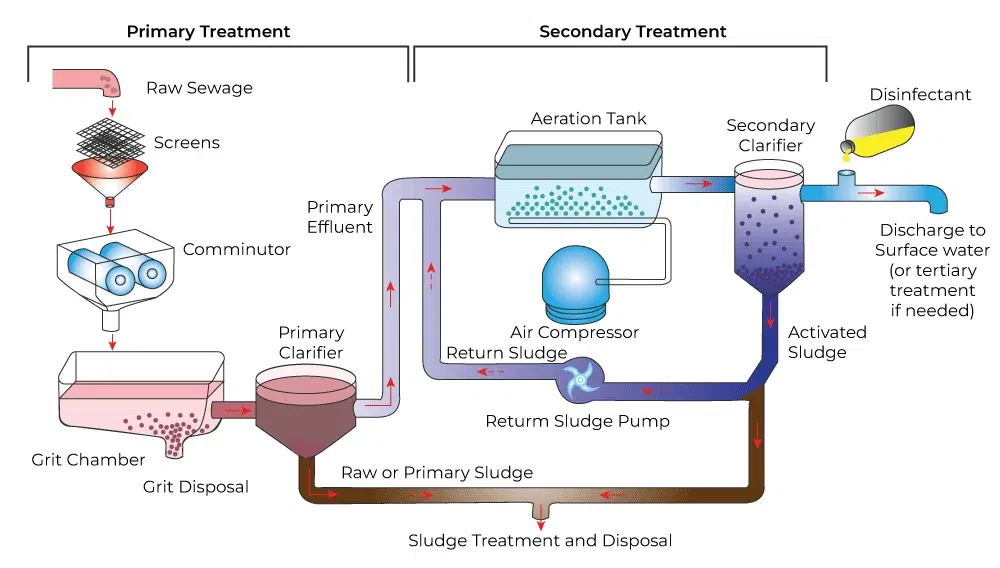Microbes in Human Welfare
Introduction: Microbes are the tiniest living organisms, visible only under a microscope. They exist everywhere, including in air, water, soil, plants, animals, extreme environments like thermal vents, and even under layers of snow. Not all microbes are harmful; some are highly beneficial to humans.
Section 1: Microbes in Household Products

1.1 Microbes in Food Production: Microbes play a crucial role in our food production. Lactic Acid Bacteria (LAB) help curdle milk and maintain a healthy gut. Baker’s yeast (Saccharomyces cerevisiae) is used to ferment foods like idli, dosa, bread, and jalebi, producing carbon dioxide gas.
1.2 Traditional Beverages: Toddy, a traditional drink in parts of southern India, is made by fermenting plant sap. The production of carbon dioxide by Propionibacterium sharmanii leads to the characteristic holes in Swiss cheese.
Section 2: Microbes in Industrial Products
2.1 Fermentation: Microbes are used in industries for fermentation processes, such as producing fermented beverages like wine, beer, and whisky. Yeast (Saccharomyces cerevisiae) is a key player in ethanol production.
2.2 Antibiotics: Microbes produce antibiotics, chemical substances that kill or inhibit the growth of harmful microbes. Antibiotics are vital in treating diseases like cholera, whooping cough, and pneumonia. Penicillin, discovered by Alexander Fleming, was the first antibiotic.
| Antibiotics | Microbial sources | Diseases which are treated |
| Penicillin | Penicillium notatum | Asthma |
| Erythromycin | Streptomyces sp. | pneumonia, TB |
| Streptomycin | Streptomyces griseus | Eye infections |
| vancomycin | Amycolotatepsis sp. | Diarrhoea |
| Chloromycin | Streptomyces Venezuela | Typhoid |
2.3 Enzymes and Bioactive Molecules: Microorganisms are used to produce various enzymes and bioactive molecules. For example, lipases are used in detergents to remove oily stains, while streptokinase is used as a ‘clot buster’ to remove blood clots in heart disease patients.
| Name of the Acid Producer | Classification | Acid/acids produced |
| Aspergillus niger | fungus | citric acid and oxalic acid |
| Acetobacter aceti | bacterium | acetic acid |
| Clostridium butylicum | bacterium | acetic acid |
| Lactobacillus | bacterium | butyric acid |
| Saccharomyces cerevisiae | yeast | ethanol |
Production and Uses of Enzymes
| Name of the products/enzymes | Uses | ||
| Lipases | In detergent formulations To remove oily stains- used in laundry | ||
| Pectinases and proteases | To clarify juices(tetra-packs) | ||
| Streptokinase | Used as a ‘clot buster’ for removing blood clots in patients having heart diseases | ||
| Cyclosporin A (produced by a yeast- Monascus purpureus) | Used as an immunosuppressive agent in organ-transplant patients | ||
| Statins (produced by a yeast- Monascus purpureus) | Used as blood-cholesterol lowering agents (inhibits cholesterol producing enzyme) | ||
Section 3: Microbes in Sewage Treatment
3.1 Sewage Treatment Process: Human excreta is a major component of wastewater, which contains organic matter and pathogens (disease-causing organisms). Sewage is treated in sewage treatment plants (STPs), typically through primary and secondary treatment stages.
3.2 Primary Treatment: In the primary treatment stage, materials settle by gravity, removing floating debris, soil, and pebbles. This results in primary sludge and effluents.
3.3 Secondary/Biological Treatment: Effluents from the primary treatment are treated further in aeration tanks. Aerobic microbes consume organic matter, reducing Biochemical Oxygen Demand (BOD). Bacterial flocs settle as activated sludge before treated water is released into water bodies.

Section 4: Microbes in Biogas Production
4.1 Methanogens: Methanogens, like Methanobacterium, are bacteria that produce methane. They grow anaerobically and are found in sewage treatment, rumen (cattle stomach), and marshy areas.
4.2 Biogas Plants: Biogas plants use methanogens to convert bio-wastes into biogas, primarily methane. The technology was developed to promote clean energy and waste management.

Section 5: Microbes as Biocontrol Agents
| Name of the Microorganisms | Used to get rid of/control |
| Beetles with red and black dots (Ladybirds) | Aphids |
| Dragonflies | Mosquitoes |
| Bacillus thuringiensis (Bt- bacterium) | butterfly caterpillars |
| Trichoderma (fungus) | plant pathogens |
5.1 Biological Control: Microbes are used for biological control of plant diseases and pests, offering an eco-friendly alternative to toxic insecticides and pesticides.
5.2 Integrated Pest Management (IPM): Integrated pest management programs conserve beneficial insects to control pests naturally.
Section 6: Microbes as Biofertilizers
6.1 Biofertilizers: Biofertilizers, including bacteria, fungi, and cyanobacteria (algae), enrich soil nutrients. Examples include Rhizobium bacteria that fix atmospheric nitrogen for leguminous plants and mycorrhiza fungi that enhance phosphorus absorption.
| Name of the microorganisms | Uses |
| Rhizobium bacteria | Fix atmospheric nitrogen into organic forms which are used by the leguminous plants |
| Azospirillum and Azotobacter (free living bacteria) | Fix atmospheric nitrogen |
| Fungi form symbiotic associations with plants (mycorrhiza) | Absorbs phosphorus from soil and provides to the plant |
| Cyanobacteria- Anabaena, Nostoc, Oscillatoria (autotrophic microbes) | fix atmospheric nitrogen |
| cyanobacteria | Used in paddy fields as it is an important fertilizer that increases soil fertility |
Conclusion: Microbes, despite their tiny size, play significant roles in human welfare. They contribute to food production, disease treatment, environmental cleanup, clean energy generation, and sustainable agriculture, making them invaluable allies in our lives.